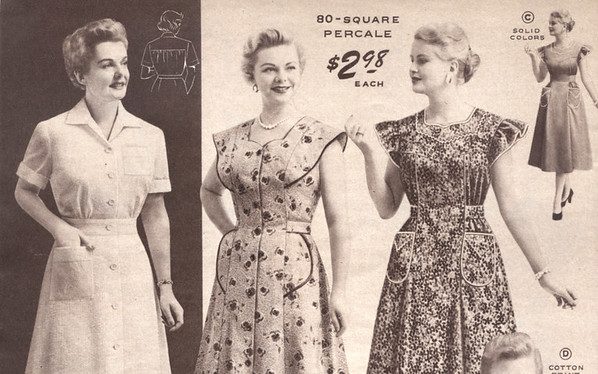The History Behind Women’s Pockets

May 24, 2022
As a girl, I can never comfortably fit my phone, wallet, or much of anything else into my pocket. Inexplicably, this is an issue that encompasses the entire female gender. On any social media app, you can find a woman raving about a dress’ pockets or complaining about the lack thereof in all her other pants. Meanwhile, men’s pockets easily fit a phone and a wallet, with plenty of room to spare. For no clear reason, there’s a large gap between the room in men’s pockets versus women’s. Although many have theorized about companies’ tactics to sell women more purses, the more tangible reason for this inequality lies in the evolution of fashion and problematic views of gender.
In the Medieval era, men and women were equal pocket-wise, and both wore fanny-pack-like bags around their waist. These “external pockets” would be hidden under clothing and accessed through slits cut in jackets, petticoats, and dresses. Like a small purse, the external pockets were able to fit a lot: things like food, money, sewing kits, writing materials, and keys. In the late seventeenth century, pockets became permanently sewn into men’s clothing. Women’s pockets, on the other hand, did not follow, marking the beginning of the gender divide in pockets.
Although this wasn’t a problem at first, fashion during the French Revolution began to cater more towards form-fitting dresses and skirts, posing a new challenge. The pouchy pockets of the mid-eighteenth century were unsuitable for the new trends, so women’s options for storage had to change accordingly. By the end of the 1700s, reticules and chatelaines replaced their bulky counterparts. Reticules were decorated purses that were comparatively miniscule, and chatelaines were waist chains that put women’s belongings on full display. Despite their varying inconveniences, other options were sacrificed to maintain a good silhouette.
During the French Revolution, concepts of property, privacy, and propriety were extensively challenged. Because women’s pockets were private, they indicated a sort of freedom, and taking pockets away would successfully take away this freedom. Moreover, women’s pockets were deemed unnecessary, since it was common for husbands to carry the money and necessities.
As fashion continued to evolve, women’s clothing began to permanently integrate pockets, like how men’s had decades before. However, unlike men’s perfected pockets, women’s pockets were impractical. In dresses, they were put in uncomfortable places, like at the hem of a skirt. During the World Wars in the 20th century, women’s pants pockets were finally sufficient—until women’s clothing evolved again, and slenderness became the priority. Thus, functional pockets were compromised for a better figure.
“The privilege of having decent sized pockets should not be privy to just men’s clothing,” said freshman Hally Nguyen. “Most women I know carry almost twice the amount men have on their person. In the new world where things are changing, we should take this step in improving equality and the lives of men and women in general.”
While men’s pockets are designed for utility, women’s pockets are designed for beauty. This choice, conscious or not, only iterates the idea that women exist to be looked at, rather than to do something of importance. Even if this message is unintentional, themes in the French Revolution confirm how sexism has been instilled into history and, accordingly, into our clothing, too.
Photo by Jessica Hartman Jaeger
